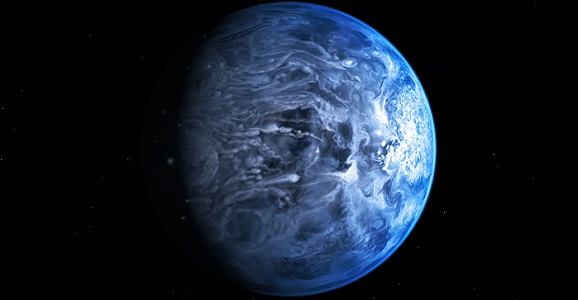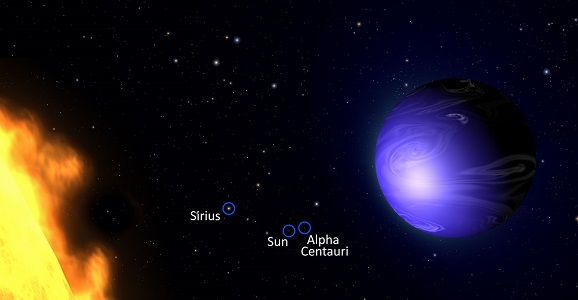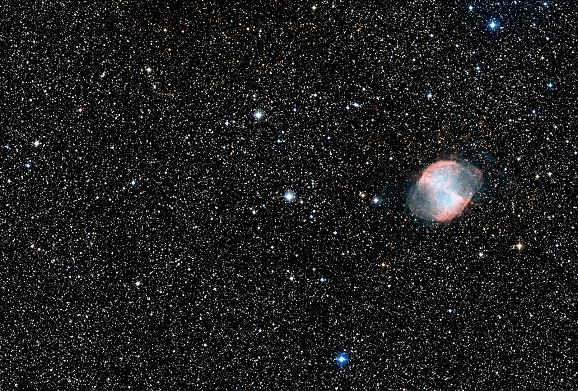Hubble Identifies A Beautiful Blue Exoplanet Where It Rains Glass
This article is more than 2 years old
 If there are any other habitable planets out there, with populations that have dedicated sizable portions of their resources to studying the universe, I wonder if they’d even be able to see our humble Earth, much less be able to tell what color it is. It seems unlikely that the “Big Blue Marble” or Mars’ “Red Planet” nicknames would be a part of their nomenclature. “Measly little polluted rock ball” is a better choice.
If there are any other habitable planets out there, with populations that have dedicated sizable portions of their resources to studying the universe, I wonder if they’d even be able to see our humble Earth, much less be able to tell what color it is. It seems unlikely that the “Big Blue Marble” or Mars’ “Red Planet” nicknames would be a part of their nomenclature. “Measly little polluted rock ball” is a better choice.
Now, for the first time, astronomers have identified the visible color of a distant exoplanet. Scientists have long studied the star system of exoplanet HD 189733b, located approximately 63 light-years from Earth. But only recently has the planet’s color been measured by detecting how much light reflects off of its surface, a process also known as albedo. It turns out HD 189733b is a beautiful azure blue. So beautiful, in fact, that I’d like to petition Lowes and Home Depot, demanding that they add HD 189733b to their paint swatch collections.
The blue color comes not from watery oceans, but from the atmosphere, which is presumably filled with blue, light-scattering silicate particles. This is also a planet that reaches temperatures of over 1000 degrees Celsius, and where glass rains down sideways in 7,000 kilometer-per-hour winds. Not somewhere you may want to call home in the near future.
“This planet has been studied well in the past, both by ourselves and other teams,” says the paper‘s co-author Frédéric Pont, of the University of Exeter and leader of the Hubble observing programme. “But measuring its colour is a real first — we can actually imagine what this planet would look like if we were able to look at it directly.”
HD 189733b is one of the closest exoplanets that can be seen crossing the face of its star, and that’s because it’s both close to that star and because it’s enormous. It’s classified as a “hot Jupiter,” which is the same thing I ordered at a nightclub recently before waking up in a bathtub full of ice.
 Using the Hubble Space Telescope Imaging Spectrograph, astronomers studied the star system before, during, and after the planet passed behind its host star, and noted how much the system’s light dimmed. This strategy helped them to figure out how the planet’s visible color is affected.
Using the Hubble Space Telescope Imaging Spectrograph, astronomers studied the star system before, during, and after the planet passed behind its host star, and noted how much the system’s light dimmed. This strategy helped them to figure out how the planet’s visible color is affected.
“We saw the brightness of the whole system drop in the blue part of the spectrum when the planet passed behind its star,” explains the University of Oxford’s Tom Evans, the paper’s first author. “From this, we can gather that the planet is blue, because the signal remained constant at the other colours we measured.”
Seriously though, it rains glass sideways there. Maybe we should be studying planets that would spend more than half a millisecond contemplating destroying us before actually destroying us. But I can’t stop looking…













